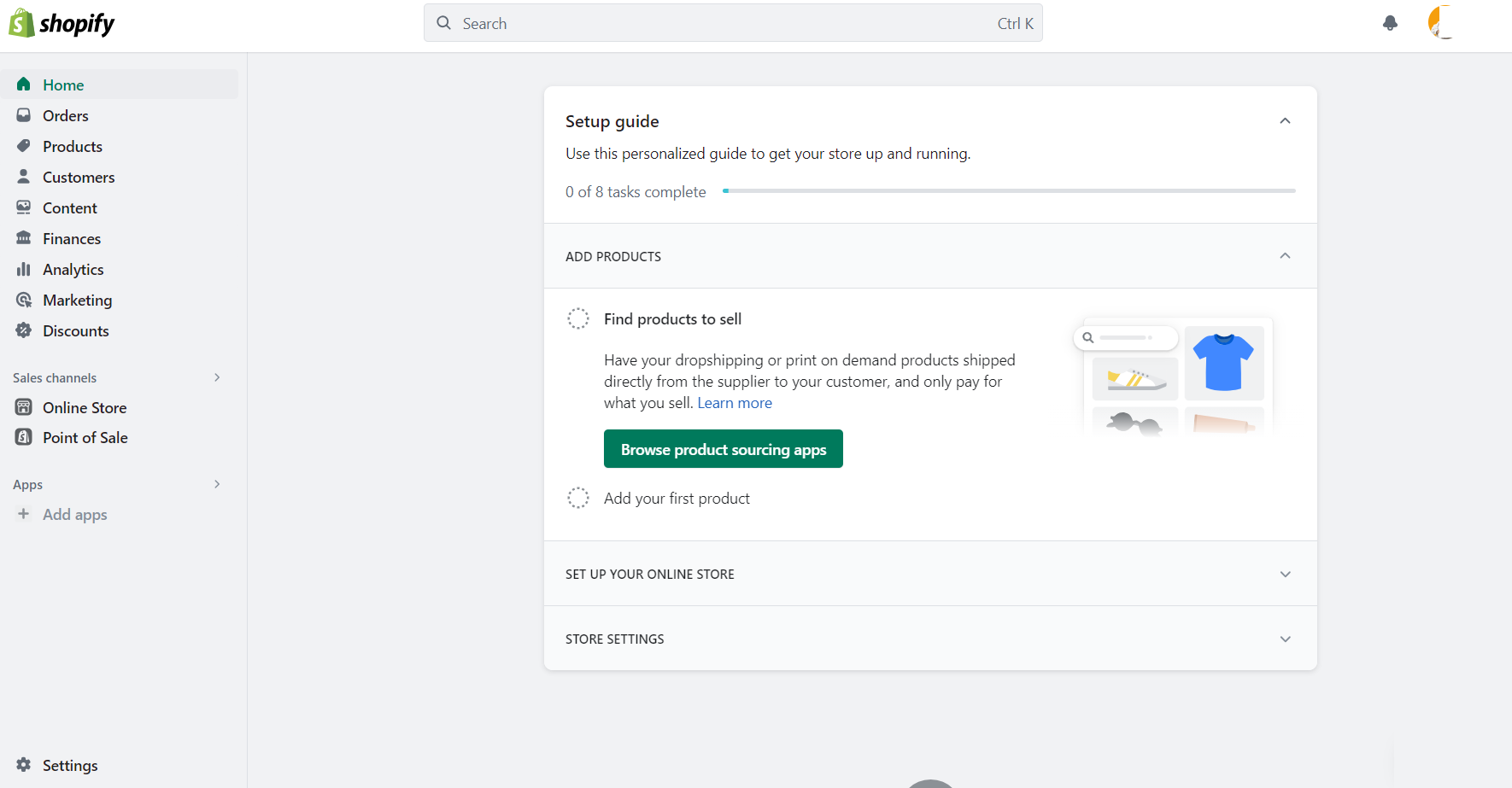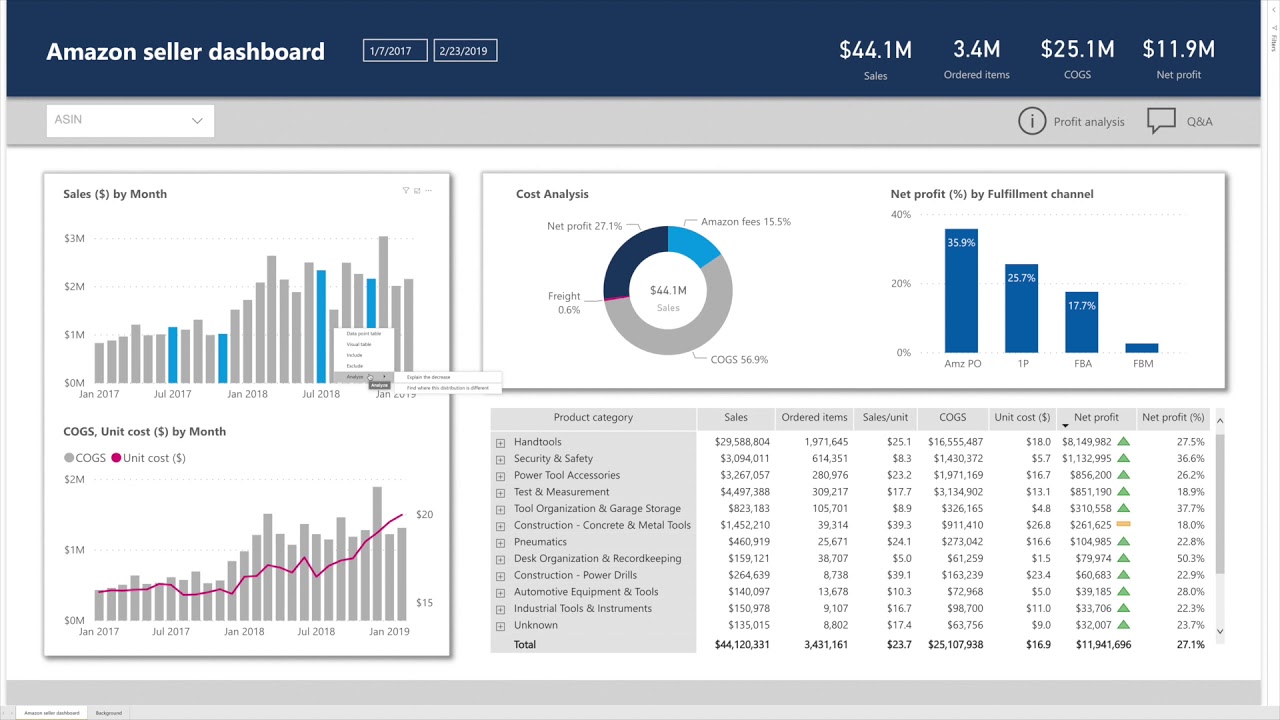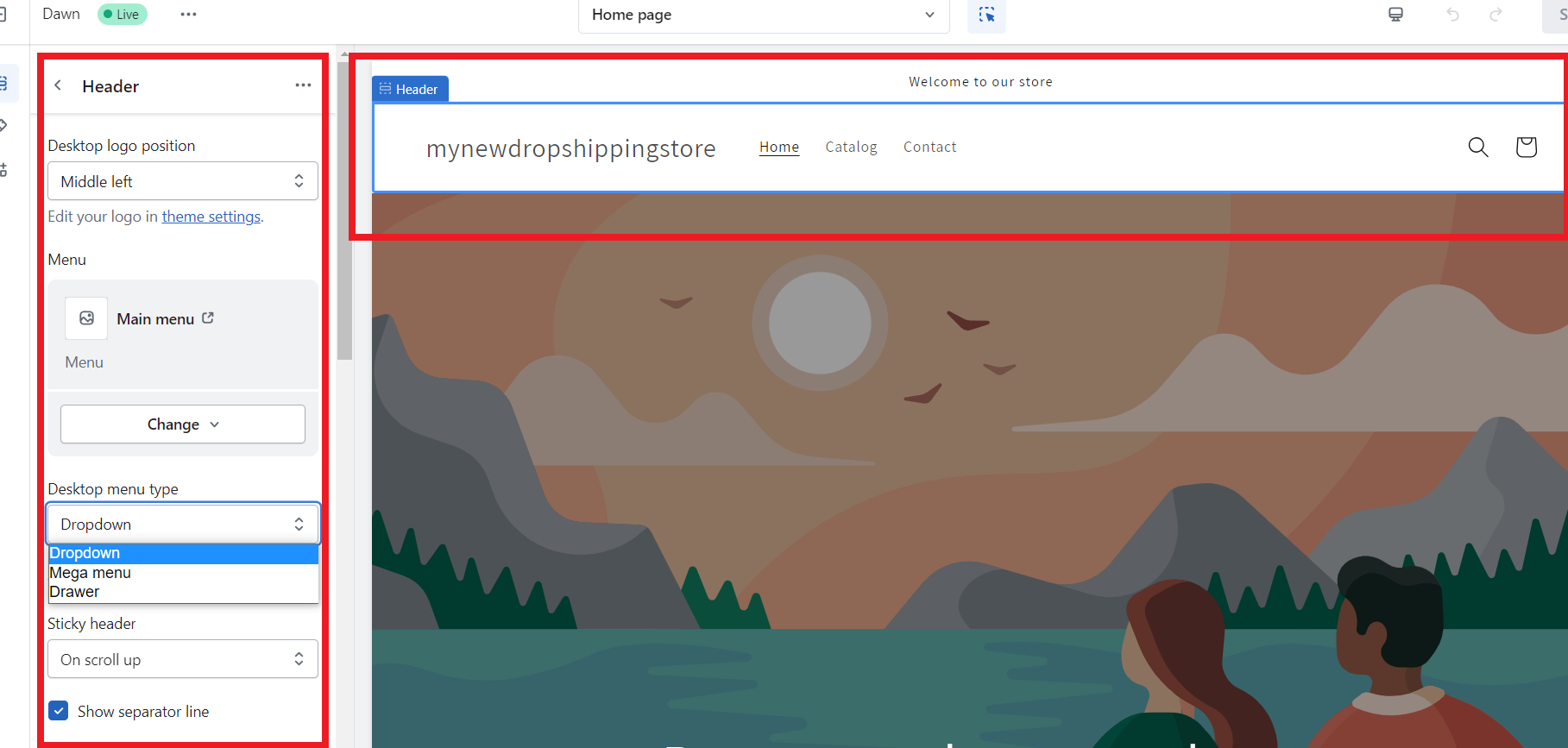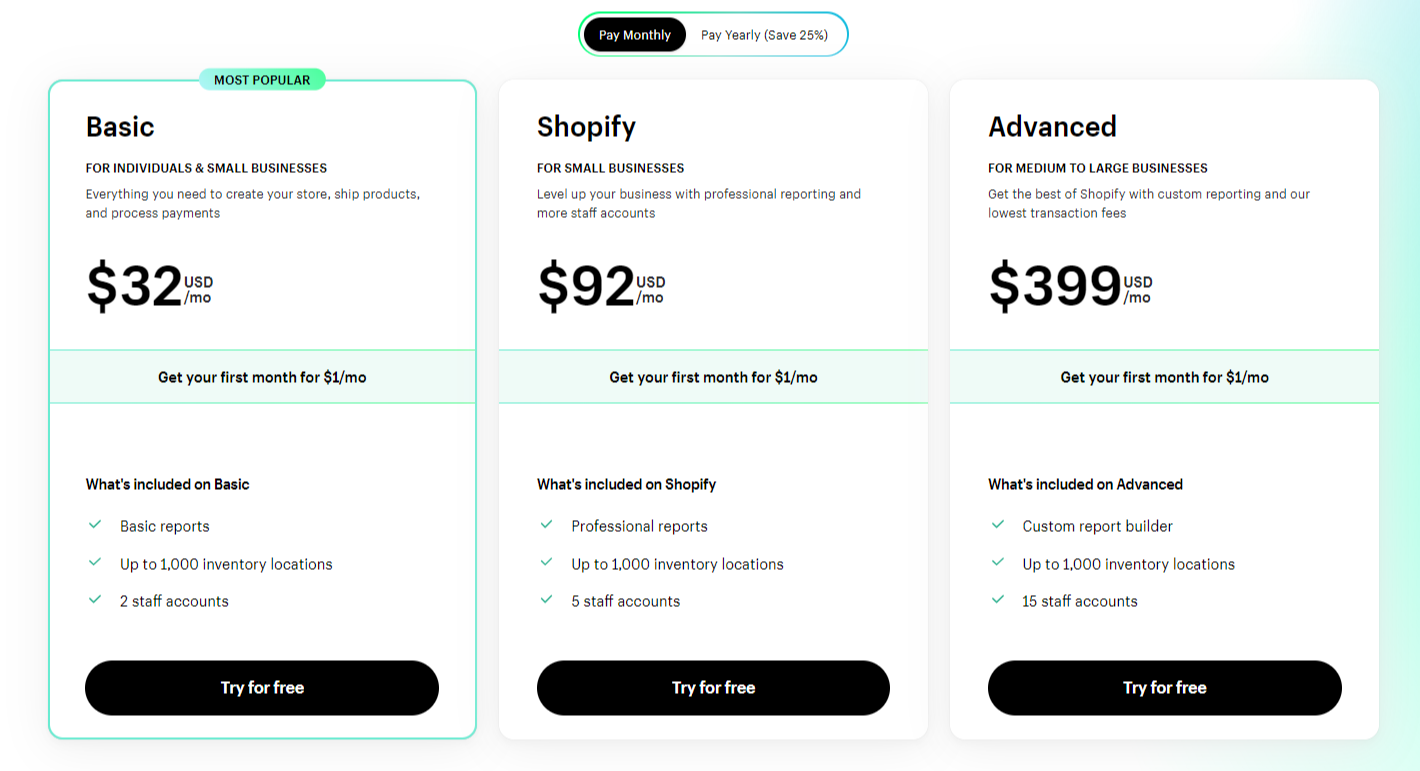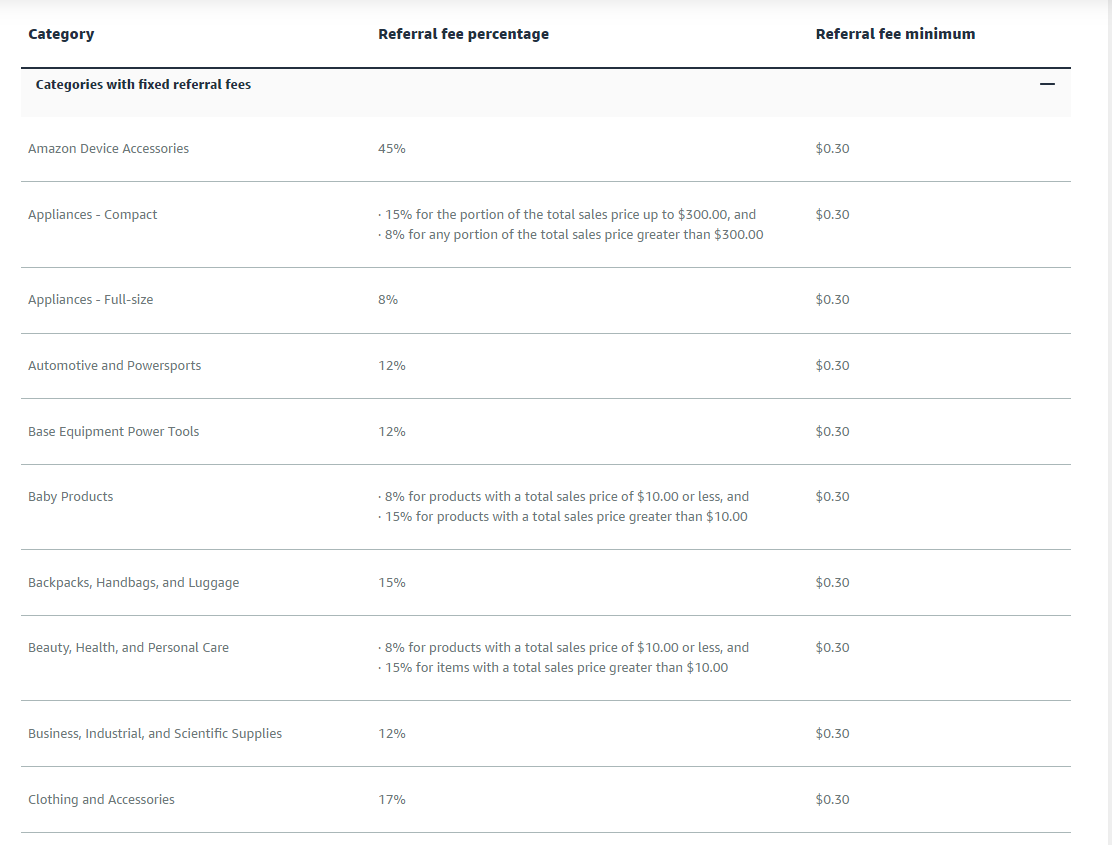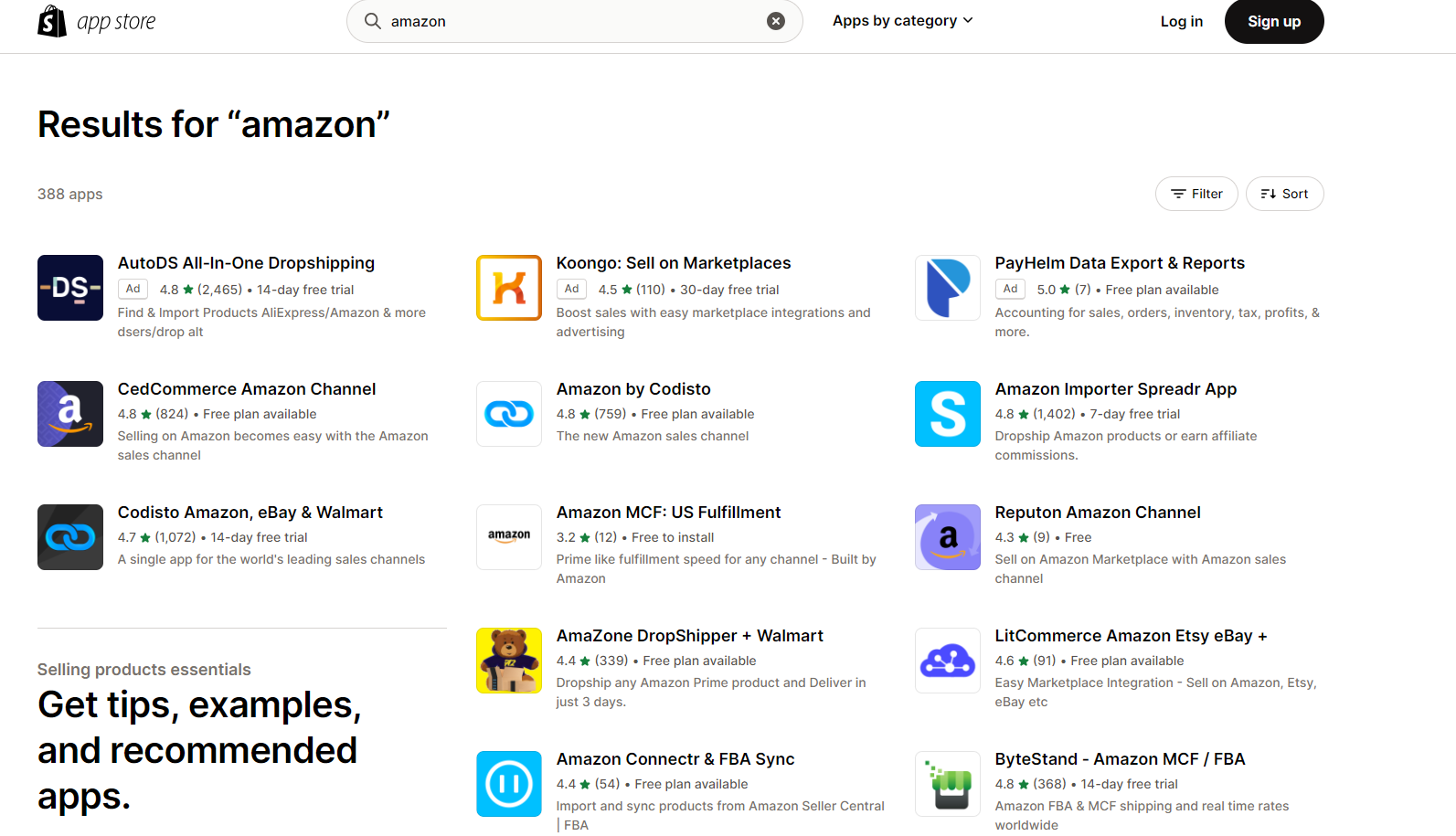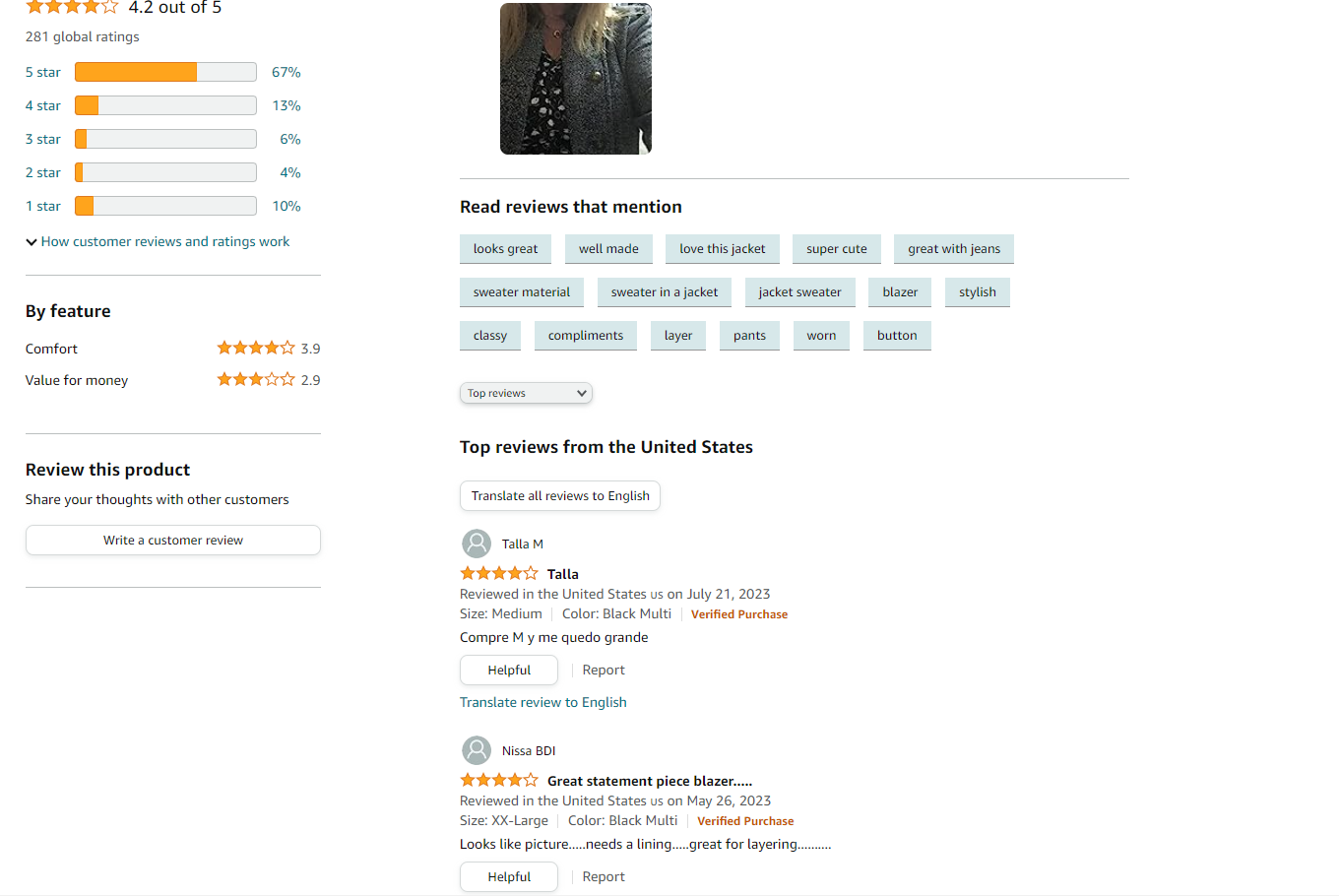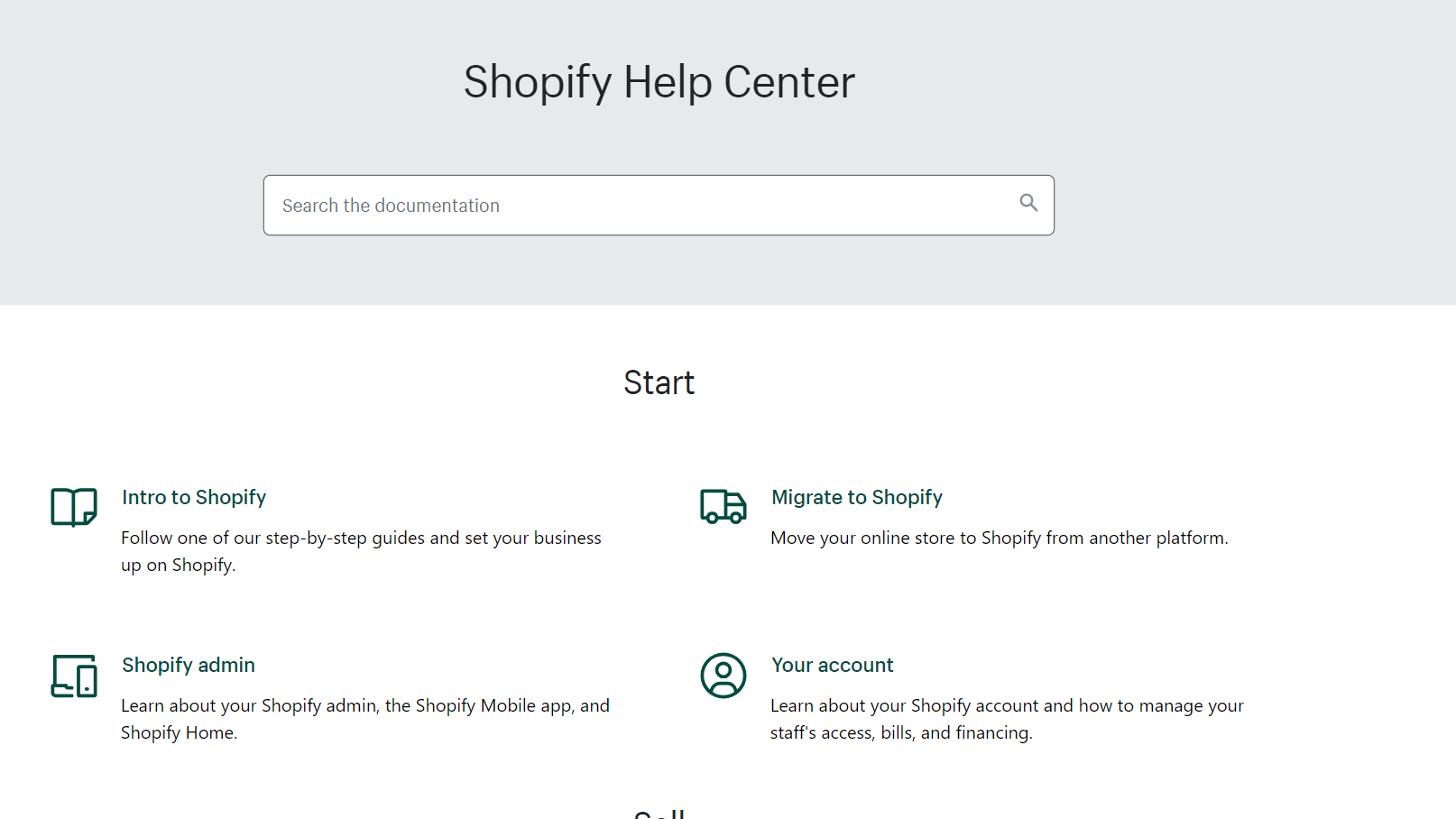Are you considering starting an online business but not sure which platform to choose for your dropshipping venture? Amazon vs Shopify? Is that your concern? Fear not, because I have gathered expert advice to help you make an informed decision.
Choosing the right platform for your dropshipping business is essential for success. While Shopify provides flexibility and customization options, Amazon FBA offers a massive customer base and streamlined fulfillment services.
In this article, I will explore different angles of their differences, their pros & cons, and even more, providing expert advice to help you make the best decision for your dropshipping venture. Let’s dive in!


What Is Shopify?

Shopify is a robust and user-friendly ecommerce platform and the best website builder I’ve ever used! It empowers online business owners to create and manage their own online stores.
Thus, with its wide range of features and customizable templates, Shopify provides a scalable solution for dropshipping businesses of all sizes.
It offers an extensive marketplace of third-party apps and integrations, a built-in payment processor, customizable templates, and much more.
Read about Is Shopify Legit in 2024? +6 Common Shopify Scams.
What is Amazon FBA?
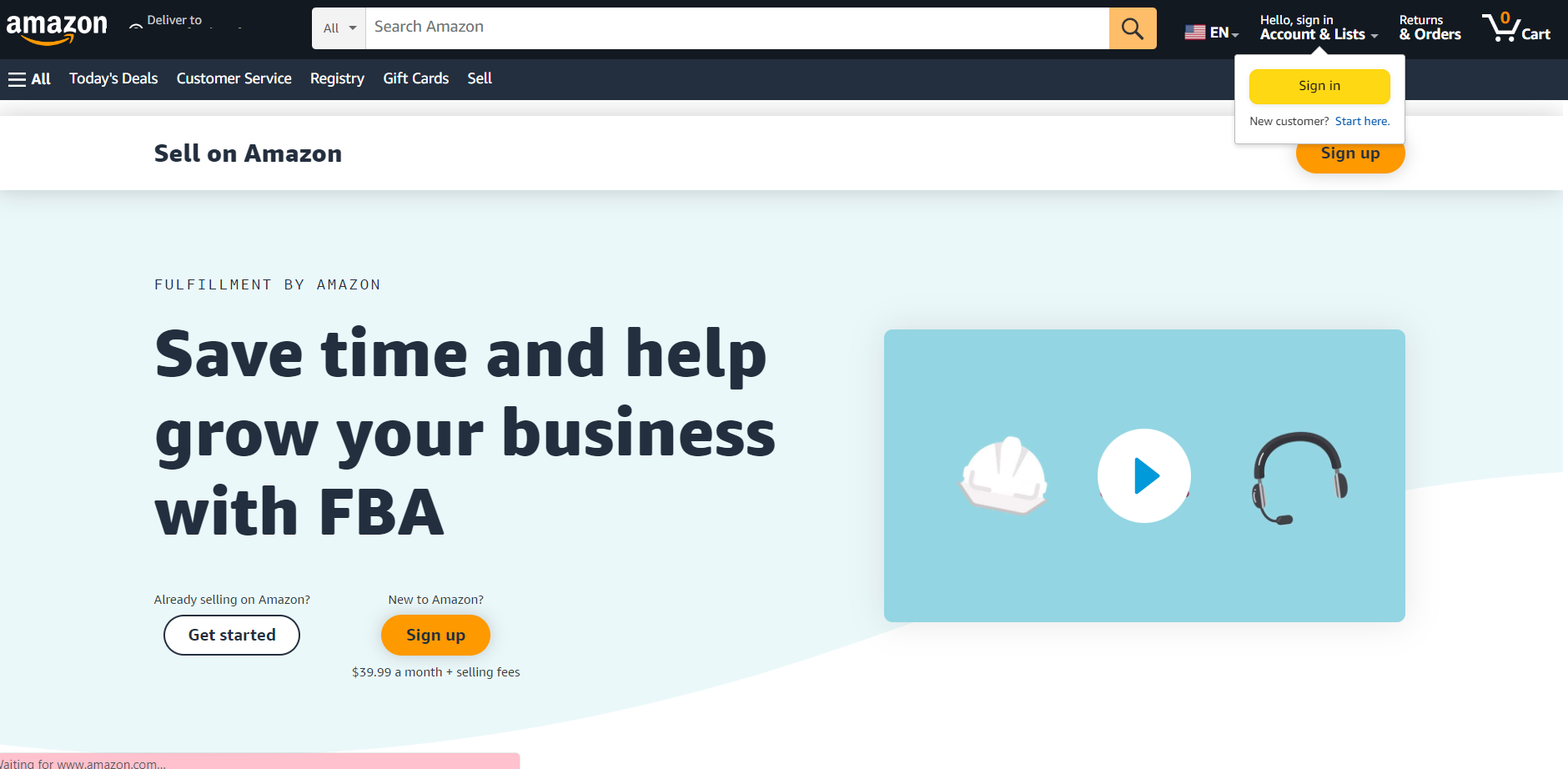
Amazon FBA, or Fulfillment by Amazon, is an e-commerce service provided by Amazon that offers a variety of benefits for online sellers.
So, while Shopify is an ecommerce platform that allows business owners to create and customize their own online stores, Amazon FBA takes a different approach by offering a ready-made customer base and a comprehensive fulfillment solution.
With Amazon FBA, you can store your inventory in Amazon’s fulfillment centers. This means that Amazon takes care of storing, packing, and shipping the products on behalf of the seller. Plus, you have access to Amazon’s vast customer base.
💡 Tip: Discover the 17 Best Multi Vendor Marketplace Platforms For Ecommerce.
Now, let’s see the main differences between Amazon vs Shopify. 👇
👉 Learn How To Become An Amazon Product Tester From Home.
Quick Amazon Vs Shopify Comparison

The best
- E-Commerce Tools
- Brand Promotion
- Wide Range of Customization options
- Low Transaction Fees
The worst
- Monthly Fees
- Big Expenses for "No Sales"
- Must use Premium plan to scale up
Starting from
- Shopify Basic – $32/month; Shopify Regular – $92/month; Shopify Advanced – $399/month

The best
- Affiliate Marketing
- Huge Traffic
- Premium Services
The worst
- Branding
- Lots of Competition
- Transaction Fees
Starting from
- For high sales volume – $39.99 per month; For individual sellers – $0.99 per item sold. + refferal fees and fulfillment fees ( depend on product category)
What Are The Differences – Amazon vs Shopify for Dropshipping?
If you want to make money, both platforms are a great option. Both the platforms offer tools you can use but they aren’t exactly the same. They both operate in their own ways.
Shopify is a unique e-commerce platform that gives you the needed tools and designs to build your own dropshipping website.
Amazon is not exactly that, Amazon is more about letting you use their website with other sellers to make a profit.
You can imagine it this way, Amazon would be just like if you used someone’s office to do business. Whatever you do, you can’t really promote yourself as much. It is more of an office with individual sellers and not a team.
Shopify is just like renting a building and doing business there. You don’t owe the building but you can promote yourself as much as you want. You have your own store, maybe even a team, and can do anything you want.
Amazon vs Shopify – My In-Depth Comparison
🔸 Ease of use
When it comes to ease of use in selling online, both Shopify and Amazon offer user-friendly interfaces that cater to different needs.
➡ Shopify is renowned for its intuitive and beginner-friendly platform. With a straightforward setup process, users can easily create and customize their online stores using pre-existing templates and themes.
They have an easy navigational dashboard from which you can access their drag-and-drop editor and customize your store quickly and hassle-free. Plus, you can manage your order fulfillment, inventory, products, and more.
➡ On the other hand, Amazon provides you with access to a global marketplace with an already-established customer base.
While the setup process on Amazon can be slightly more complex compared to Shopify, it has various steps before you sign up, and it requires lots of serious information.
Plus, their dashboard looks more complex, with lots of information on it. Hence, for beginners, it can be a little bit confusing.
Also, the competition is fierce on Amazon, and you need to optimize your product listings, pricing, and fulfillment methods to stand out from the crowd.
In my opinion, Shopify excels in ease of use and customization options, while Amazon offers access to a massive global marketplace but with stiffer competition.
🔸 Autonomy
Without a doubt, Shopify is the winner here. Since you own your own e-commerce store, that also means you have autonomy.
➡ As long as you pay your monthly fees, your autonomy on Shopify will always belong to you without any external interference. And, you have full hands of self-control here, whether is your store design, products you are selling, apps you are using, etc.
➡ Amazon on the other hand as I mentioned before doesn’t have much autonomy here. Thus, you aren’t using your own website or designing it according to your preferences. The only thing you have control of is your product.
🔸 Key Features
Now, let’s take a closer look at the Amazon vs Shopify features.
➡ Shopify Features
Shopify boasts a range of features designed to simplify the process of setting up and managing an online store.
First things first, their drag-and-drop editor allows you to make stunning and unique landing pages. This way, you can build your brand and stand off the crowd. What’s more, it offers you 140+ paid and free templates to choose from. And, you can change everything there as well!
Shopify also offers a wide range of ecommerce tools at their Shopify app store, including product listings, inventory management, and order tracking. In fact, I think that at this moment there are over 450 apps designed just for dropshippers.
Additionally, it provides integration with social media channels, apps, and platforms, allowing you to reach a broader audience.
👉 Learn How To Set Up Your First Store On Shopify [No.1 Beginners Guide].
➡ Amazon Features
On the other hand, Amazon offers a robust online marketplace with a vast customer base. So, if you are looking to expand your sales faster, this might be your solution.
However, it does not offer a unique storefront, like Shopify. So, it is very challenging to attract customers to your store, since it is not different than your competitors.
The best part, Amazon also facilitates the fulfillment process through its FBA service, streamlining shipping and order processing. It allows you to outsource your warehousing, order fulfillment, and shipping processes.
Plus, they personally take care of all aspects of the logistics, including picking, packing, shipping, and customer service. Plus, from your inventory management dashboard, you have full control over inventory.
Hence, you can create shipping plans, send in shipments, track and monitor your shipments, and remove inventory from Amazon fulfillment centers.
Another significant feature of using Amazon FBA is the ability to offer Prime shipping to customers. Thus, you can tap into this feature and attract more customers who prioritize fast and reliable delivery. This can lead to higher conversion rates and increased customer loyalty.
Also, they offer a wide range of tools to help you plan, automate, outsource, scale, and keep your business humming.
Furthermore, Amazon allows users to search for a wide range of products based on keywords, categories, or specific criteria. But, remember, you must do research on whether you deal with reliable dropshipping suppliers.
Next, you can create detailed product listings that include descriptions, images, pricing, and other relevant information to attract potential buyers.
👉 Check out the 20 Best Dropshipping Suppliers For Amazon In 2024.
🔸 Amazon vs Shopify Pricing
➡ Shopify Pricing
Shopify offers three pricing options for users.
The Shopify Basic package is priced at $32 per month and provides features like unlimited product listings, two staff accounts, a website and blog, and integration with third-party apps.
The Shopify Regular plan, available for $92 per month, includes all the features of the Basic plan and is tailored for businesses with higher sales volume. It offers additional benefits such as the ability to create up to five staff accounts, advanced report generation, and real-time carrier shipping.
The Advanced Shopify plan, priced at $399 per month, is the most comprehensive option and is suited for businesses with complex needs and substantial sales volume. Alongside the features of the Basic and Regular plans, this package provides advanced features like the ability to create up to 15 staff accounts, advanced report generation, and real-time carrier shipping, duties, and import taxes.
For large-scale enterprises, Shopify Plus is the recommended platform, with a monthly cost of $2,000. This plan includes all the features of the standard Shopify package, along with additional high-volume features specifically designed for larger businesses.
Also, the transaction fees range in addition to the monthly subscription fees that you pay to use the Shopify platform.
- Basic Shopify Plan – charged a transaction fee of 2.9% + 30¢ for each online transaction made.
- Shopify Regular Plan – charged a transaction fee of 2.4% + 30¢ for each online transaction.
- Advanced Shopify Plan – transaction fee of 2.4% + 30¢ for each online transaction.
👉Check out the Shopify Pricing Plans in detail.
➡ Amazon FBA Pricing
First, Amazon offers professional selling plans for sellers who anticipate high sales volume, priced at $39.99 per month, while individual sellers pay $0.99 per item sold.
On the other hand, Amazon charges fees based on a referral model. Sellers on Amazon pay referral fees for each product sold, which vary depending on the product category.
Check out the referral fees for each category here.
It is important to note that Amazon also has additional costs, such as fulfillment fees for storing and shipping products through their fulfillment centers. These fees include charges for storage space, order handling, and pick and pack.
Overall, Shopify’s pricing structure is more straightforward, with fixed monthly fees, while Amazon’s fees depend on the products sold and additional costs like fulfillment fees.
🔸 Payment Methods
Amazon mostly allows credit & debit cards as the main payment methods while Shopify allows any kind of payment method. Let’s see this in more detail.
➡ Amazon Payment Methods
- Credit or Debit Cards. Amazon accepts major credit and debit cards, including Visa, Mastercard, American Express, and Discover.
- Amazon Store Card. This is a credit card issued by Synchrony Bank exclusively for Amazon customers. It offers special financing options and rewards for Amazon purchases.
- Amazon Gift Cards. Customers can use Amazon gift cards to make purchases on the platform. These gift cards can be purchased online or in physical stores.
- Amazon Pay. This is a digital wallet service provided by Amazon that allows customers to make payments using their Amazon account information. It can be used on various websites and apps that accept Amazon Pay.
- Amazon Cash. This is a service that allows customers to add cash to their Amazon account by visiting participating retailers and presenting a barcode. The added cash can then be used for purchases on Amazon.
➡ Shopify Payment Methods
- Shopify Payments. This is Shopify’s built-in payment gateway that allows merchants to accept credit card payments directly on their online store. It supports major credit cards like Visa, Mastercard, American Express, and Discover.
- PayPal. Shopify integrates with PayPal, allowing customers to make payments using their PayPal account. It provides a secure and widely recognized payment option.
- Stripe. Stripe is a popular payment gateway that integrates with Shopify. It allows customers to pay using credit cards and supports various currencies.
- Apple Pay. Shopify supports Apple Pay, enabling customers to make purchases using their Apple devices with a single touch or click.
- Google Pay. Shopify also integrates with Google Pay, allowing customers to make payments using their Google account information.
- Klarna. Klarna is a “buy now, pay later” service that integrates with Shopify. It allows customers to make purchases and pay in installments over time.
- Amazon Pay. Similar to the Amazon Payment method mentioned earlier, Shopify also supports Amazon Pay as a payment option on its platform. Customers can use their Amazon account information to make purchases.
👉 Read about the 7 Best Payment Gateways For Shopify In 2024.
And, my answer is clear on this – Shopify is definitely my winner.
🔸 Integrations
➡ First, Amazon integrates with various tools to support its business, like Amazon Pay, Amazon Seller Center, Amazon Prime, Amazon Web Services (AWS), Amazon Marketplace Web Service (MWS), etc.
Also, it partners with many other popular platforms, like Shopify, Microsoft, Adobe, Red Hat, HubSpot, WooCommerce, and many others.
➡ On the other hand, Shopify offers a wide range of integrations through its App Store, allowing you to add functionalities like email marketing, customer support, and social media management to your Shopify store.
Plus, it partners with various popular platforms. In fact, it partners with all of the above-mentioned, and many more.
So, Shopify exceeds Amazon in this feature.
Also, it is worth mentioning that Shopify integrates with Amazon as well. With this integration, you have the opportunity to sell Amazon products directly on your Shopify online stores.
In fact, you have more than 380 apps on the Shopify app store that will help you dropship from Amazon to Shopify. 👇
This cross-selling feature allows you to expand your reach and tap into both Shopify’s customizable online store and Amazon’s global marketplace.
🔸 Consumer Trust
Here, most of us know what the answer already is. Amazon has been around since 1994 and has probably already gained the trust of many consumers. Many people still aren’t too familiar with Shopify.
If you ask random people about both platforms, the majority will tell you that they know Amazon better than Shopify. So, you have a trust advantage here with Amazon.
Plus, the platform always shares customer reviews and comments on every product page. So, you can always check on feedback before making a purchase.
👉 Read about Testimonial Advertising: 11 Proven Examples To Sell More.
Of course, Shopify has built trust over users looking for the best website builders and eCommerce platforms as well. Hence, for that speaking are the Most Successful Shopify Dropshipping Stores out there.
💡Tip: Learn How To Open and Manage Multiple Shopify Stores (Tips + Apps).
🔸 Shipping Options
➡ Shopify Shipping Options
For dropshippers, Shopify integrates with third-party fulfillment services including Amazon FBA. Also, other popular are ShipBob, ShipStation, Rakuten Super Logistics, etc.
Shopify has integrated its platform with major shipping carriers such as USPS, UPS, and DHL to provide discounted shipping rates for businesses. Hence, you can easily compare rates, print shipping labels, and track packages directly from their Shopify dashboard.
➡ Amazon Shipping Options
Shipping products with Amazon can be done through two methods: self-fulfillment or using Amazon’s Fulfilment by Amazon (FBA) service.
With self-fulfillment, sellers are responsible for storing, packing, and shipping their products to customers.
But, as you are a dropshipper, the second option is for you.
Using the Fulfilment by Amazon (FBA) service allows you to store your products in Amazon’s fulfillment centers. This enables you to take advantage of Amazon’s robust logistics infrastructure and benefit from fast and efficient order processing. Additionally, FBA provides the advantage of offering fast delivery options, including Amazon Prime, which can attract more potential customers.
Additionally, there are fees for picking, packing, and shipping each item. These costs can vary based on the size and weight of the products.
However, for me, it is not possible to determine which shipping option is better between Shopify and Amazon. Both platforms offer different shipping options and features, and the “better” option depends on the specific needs and requirements of the business. For me, Shopify has more flexible and vast shipping options.
🔸 Customer Support
When it comes to support, both Shopify and Amazon are committed to assisting their users with any issues or questions that may arise.
Shopify offers comprehensive customer support through various channels. In fact, you can reach out for assistance via phone, email, and live chat. The platform’s support team is known for their responsiveness and knowledge, providing prompt and helpful solutions to any queries or concerns.
What’s more, Shopify also provides a vast knowledge base, including tutorials, guides, and forums, where users can find answers to common questions or seek advice from fellow store owners.
Similarly, Amazon offers a robust support system to address the needs of its sellers. With a dedicated support team, users can contact Amazon via phone or email and receive prompt assistance. Additionally, Amazon provides various resources, such as detailed documentation, FAQs, and community forums, where sellers can find answers to common issues or connect with other sellers for advice and guidance.
In my point of view, both Shopify and Amazon prioritize customer support to ensure users can effectively address any issues or questions they may encounter. So, they both win.
🔸 Analytics
When it comes to analytics, there are key differences between Amazon vs Shopify.
With Shopify, you have access to detailed insights about your online store’s performance, customer behavior, and sales trends. They can easily track key metrics such as website traffic, conversion rates, and average order value. What’s more, you can also use advanced analytics tools, such as sales channel reporting and customer lifetime value analysis.
On the other hand, Amazon offers more limited analytics for individual sellers on its marketplace. While sellers can access some data on their sales performance, inventory levels, and customer feedback, the range of metrics and insights is not as extensive as what Shopify provides.
So, it is perfectly clear that Shopify is the winner here as well.
🔸 SEO & Marketing
In the context of dropshipping on Amazon vs Shopify, marketing, and SEO plays vital roles in driving traffic, increasing sales, and building a successful online business.
When it comes to SEO strategies, Shopify focuses on optimizing for search engines like Google. With its customizable platform and SEO-friendly features, Shopify allows you to create optimized product listings, metadata, and URLs. This helps improve organic search rankings and drive more targeted traffic to their online stores.
Not just that, but Shopify has an extensive range of marketing tools, like built-in email marketing features, content marketing, social media marketing, affiliate marketing, and many more.
In contrast, Amazon’s SEO strategy primarily revolves around outranking competitors in its own search results, rather than optimizing for external search engines. So, if you are an Amazon seller, you must focus on factors such as product relevance, ratings, reviews, and fulfillment metrics to boost your rankings within the platform.
In my opinion, Shopify is THE BEST for SEO & Marketing. So, Amazon cannot stand out here. Sorry, Amazon.
Amazon vs Shopify – Pros & Cons
Amazon Pros & Cons
Here are some pros of Amazon:
-
- Affiliate Marketing- even if you don’t sell directly on Amazon, you can make money through its affiliate marketing program. Many bloggers or dropshipping sellers make 30% passive income just from using this tactic.
-
- HugeTraffic- Amazon is the king of getting traffic. Whatever you sell, your product won’t be lacking any traffic. The website gets over 200 million monthly views so they are enough to help you with exposure
-
- Premium services- There are premium services Amazon can handle for you just like handling your storage, packaging & shipping it ready for you. This makes it easier for you to run your online dropshipping business.
Here are some cons of Amazon:
-
- Branding – because you are not running on your own website, it is difficult to take credit for yourself. There are also stories where Amazon destroyed businesses that either didn’t sell any of their products or those that sold lots of them.
-
- Lots of Competition – You aren’t the only one selling on Amazon, so don’t think you are just going to go there and sell from the first day. Amazon won’t let you be the greatest, so just remember that!
-
- Transaction fees – Amazon charges more from your profit than Shopify. Shopify’s maximum transaction fee is 2% per sale, while Amazon charges anywhere from 2.9% to 3.9%!
Shopify Pros & Cons
Pros of Shopify:
-
- E-Commerce Tools – Just like WordPress is great for blog websites, Shopify is great for e-commerce sites. You have different kinds of tools that are very helpful in building your online store. This makes it easier for you versus building it from scratch.
-
- Brand Promotion – unlike Amazon, Shopify allows you to promote your brand and allows you to be in full control of it. It feels as if you never used Shopify in the first place!
-
- Lots of Customization options – You have 140+ free and paid themes to choose from. Plus, they are highly customizable. You can change color, typography, add or remove landing pages, and more.
-
- Low Transaction Fees – The maximum fee Shopify will charge you is 2% of your sales. That is nearly half of what Amazon charges!
Cons of Shopify:
-
- Monthly Fees – The only con I would include about Shopify is that it has fees to it. Whatever you add to your website, the more fees you will pay.
-
- Big expenses for “No Sales” – If you don’t sell anything, your expenses can highly overtake you and potentially come to you closing down your e-commerce store!
-
- Must use Premium plan to scale up – With basic plans, Shopify won’t allow you to access any reports or special e-commerce tools to use for your online dropshipping store.
MUST-READ: Is Shopify Still The Best Platform For Dropshipping?
Can You Use Both Amazon and Shopify for Dropshipping?
Yes, you can definitely use both Amazon and Shopify for dropshipping.
In fact, by using both platforms, you can take advantage of the wide reach and credibility of Amazon, while also having the flexibility and customization options provided by Shopify.
However, it is important to note that managing inventory and order fulfillment can be more complex when using multiple platforms, so careful planning and organization are necessary to ensure a smooth dropshipping operation.
Also, as I already explained earlier, you can connect both platforms by integrating your Amazon selling account into Shopify to reach customers instantly.
Moreover, you can compare both business models by learning the differences between Dropshipping and Retail Arbitrage.


Amazon vs Shopify – Who Wins?
So it comes down to Shopify vs Amazon, who is the real winner? Is it the autonomy of Shopify, or is it the already-made Amazon? Here is your answer:
If I look at which platform is better to have a dropshipping store, then it is definitely Shopify. Since Shopify gives you flexibility and allows you to run your store however and whichever way you want, this lets you run your online e-commerce store without any distractions. Plus, you don’t have to worry about brand awareness, promotions, design, flexibility, autonomy, etc.
And of course think about the minimum budget, to start your dropshipping journey. I covered this topic in-depth here.
On the other side, I also have online sellers who don’t want to take the liability of taking care of everything by themselves. They prefer to choose a platform that is ready for them and doesn’t waste their time and energy creating an online store. In this case, you want to choose Amazon.
The answer all comes down to what you want. What kind of seller are you? What is your goal? Once you know this, then you can find out who wins for your case.
So, before making a decision, make sure to create a dropshipping business plan.
IDEA #1: Spocket Dropshipping: The Ultimate Guide to Dropshipping With Spocket in the EU & US
IDEA #2: Wish Dropshipping: Everything You Need To Know As A Beginner.




